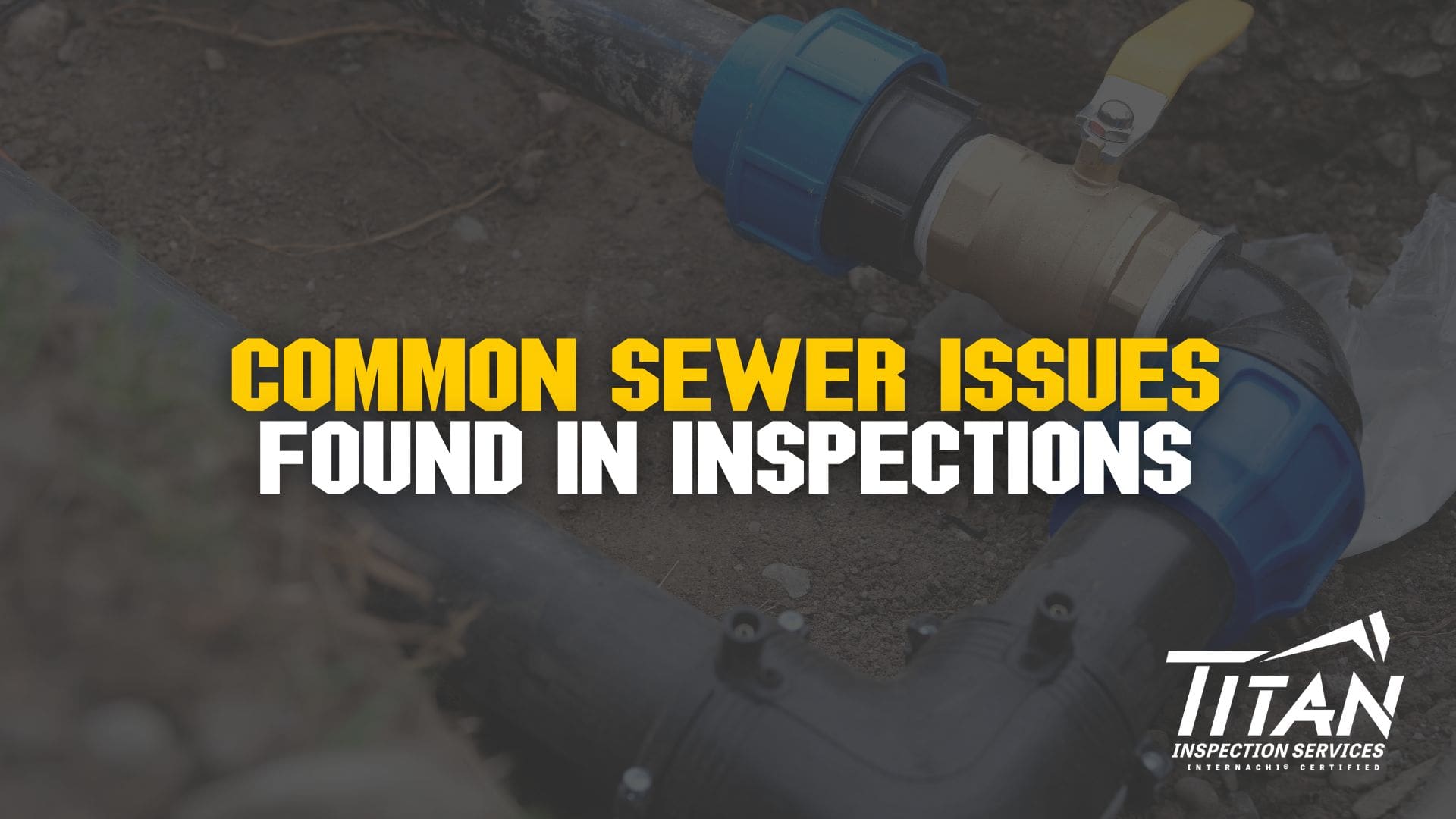
Sewer systems are one of the most critical components of a home, yet they are often out of sight and out of mind. Inspections frequently uncover hidden issues that, if left unchecked, can escalate into costly repairs or even major structural problems. Below are the most common issues identified during sewer scope inspections, along with an expanded explanation of how these problems can impact homeowners.
1. Tree Root Intrusion
Tree roots are one of the most frequent culprits behind sewer line damage, particularly in areas with mature landscaping. Roots naturally grow toward moisture, making small cracks or joints in sewer pipes a prime target.
- Why It Happens: Roots enter through tiny gaps or joints in older pipes, and as they grow, they can create significant blockages or fractures.
- Potential Damage: Over time, root intrusion can weaken the structural integrity of the pipe, leading to breaks, leaks, or even complete collapse.
- Warning Signs: Slow drains, gurgling toilets, and recurring blockages are common indicators.
- Solution: Specialized root-cutting tools or hydro jetting can clear the obstruction, but in severe cases, pipe replacement may be necessary.
2. Cracked or Collapsed Pipes
Sewer pipes, especially those made from older materials like clay, cast iron, or Orangeburg (a type of bitumen pipe used in mid-20th century homes), are prone to cracks and deterioration over time.
- Why It Happens: Natural wear and tear, soil shifting, or external pressure from heavy machinery can cause pipes to crack or collapse.
- Potential Damage: A cracked pipe can lead to sewage leaks, water damage, and even sinkholes if the soil surrounding the pipe erodes.
- Warning Signs: Unpleasant odors, unusually green patches of lawn, and low water pressure could indicate a damaged pipe.
- Solution: Depending on the extent of the damage, repairs might involve trenchless techniques like pipe lining or full pipe replacement.
3. Grease Build-Up and Debris
Improper disposal of cooking grease and household debris is a significant contributor to sewer clogs. While it might seem harmless to pour grease down the drain, it solidifies as it cools, sticking to the walls of sewer pipes and trapping other debris.
- Why It Happens: Flushing non-biodegradable items like wipes, sanitary products, or paper towels exacerbates the problem.
- Potential Damage: Grease build-up narrows the pipe’s diameter, restricting water flow and eventually causing blockages. Over time, this can lead to backflow into the home.
- Warning Signs: Slow drainage and frequent backups in sinks or tubs are telltale signs.
- Solution: Professional cleaning, such as hydro jetting, can clear grease and debris, but educating homeowners on proper disposal methods is equally important.
4. Improper Pipe Installation
Even newer homes can suffer from sewer problems due to improper pipe installation during construction. Inexperienced contractors or rushed timelines can lead to critical errors.
- Why It Happens: Misaligned joints, poor connections, or incorrect materials are common issues caused by improper installation.
- Potential Damage: Poorly installed pipes are more prone to leaks, misalignment, and early failure. In severe cases, the entire sewer system may need to be reinstalled.
- Warning Signs: Persistent backups and uneven drainage patterns often indicate installation issues.
- Solution: Corrective repairs by experienced professionals can resolve most installation-related problems.
The Importance of Sewer Inspections for New Homes
Newer homes are often assumed to be free of sewer problems, but this isn’t always the case. Construction errors, heavy equipment use, and subpar materials can leave a brand-new home with sewer issues that aren’t immediately noticeable.
Common New Build Sewer Issues
1. Crushed Pipes
During construction, heavy machinery or improperly placed concrete can crush sewer lines. Crushed pipes often result in significant blockages or leaks, leading to costly repairs.
- Impact: Homeowners may face slow drainage, sewage backups, and water damage.
- Solution: Early detection through a sewer scope inspection can prevent these problems from escalating.
2. Improper Slope
Sewer lines must have the correct slope to ensure proper drainage. A pipe with too little slope won’t allow waste to flow effectively, while a pipe with too much slope can cause liquids to drain too quickly, leaving solids behind.
- Impact: Persistent blockages and inefficient drainage systems.
- Solution: Correcting the slope involves careful excavation and realignment of the pipes.
3. Construction Debris Blockages
During the building process, it’s common for debris like wood, concrete, or even trash to find its way into the sewer system.
- Impact: This debris can cause significant clogs, leading to backups and reduced flow.
- Solution: Removing debris during a sewer scope inspection prevents future issues.
Why New Homes Still Need Sewer Inspections
Even with a brand-new sewer system, problems can arise from poor installation, environmental factors, or builder errors. Investing in a sewer scope inspection for a new home provides peace of mind, ensuring everything is functioning as it should before the first flush.
- Early Problem Detection: Inspections can identify issues like misaligned pipes or debris blockages before they cause noticeable damage.
- Long-Term Savings: Catching problems early prevents costly repairs in the future.
- Enhanced Buyer Confidence: For buyers, knowing that a new home’s sewer system is in excellent condition adds an extra layer of assurance during the purchase process.
Final Thoughts
Sewer scope inspections uncover critical issues that might otherwise go unnoticed, regardless of a home’s age. From tree root intrusion to improper installation in new builds, the problems identified during these inspections can save homeowners thousands of dollars in repairs.
For both older and newer homes, regular sewer scope inspections are an essential part of protecting your investment and ensuring the health of your property. If you’re buying, selling, or simply maintaining your home, a thorough sewer scope inspection is a step you can’t afford to skip.